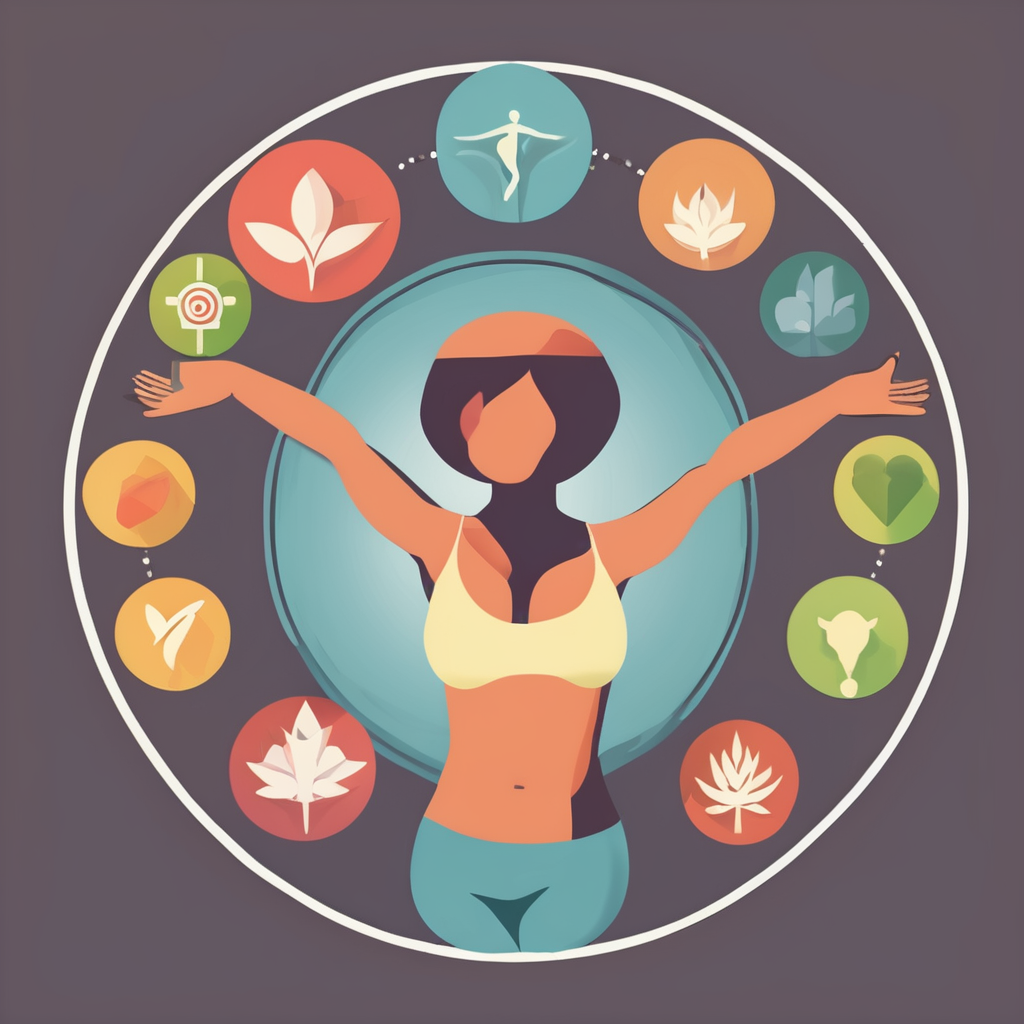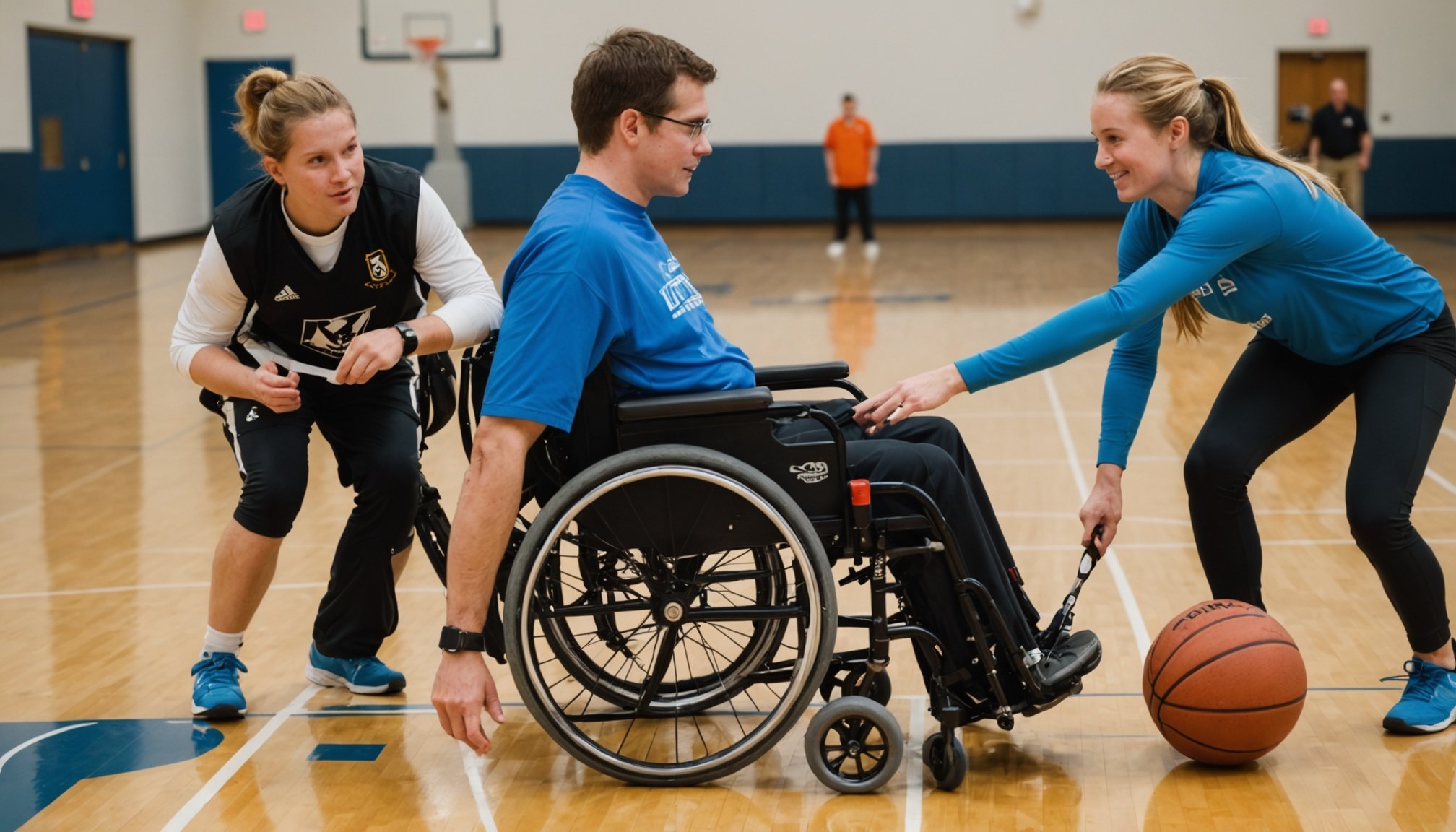Unlocking Potential: The Transformative Impact of Adaptive Sports Programs on Individuals with Physical Disabilities to Adaptive Sports
Adaptive sports programs have revolutionized the way individuals with physical disabilities engage in physical activity, fostering a sense of inclusion, community, and empowerment. These programs are specifically designed to accommodate various physical and mental disabilities, offering opportunities for people to participate in sports and recreational activities that might otherwise be inaccessible.
The Benefits of Adaptive Sports
Physical Health and Well-being
Adaptive sports programs provide numerous physical health benefits for individuals with disabilities. Engaging in regular physical activity can improve cardiovascular health, enhance motor skills, and increase overall fitness levels. For example, the Midwest Adaptive Sports organization offers a range of activities, including wheelchair rugby, wheelchair football, and youth wheelchair basketball, which not only promote physical health but also offer a competitive and social outlet[4].
In parallel : Transforming Mental Health Care: Unlocking Access Through Digital Platforms in Underserved Communities
“Playing wheelchair basketball changed the way I thought about my disability. I credit getting through college, getting a job, getting married and having kids, all to playing adaptive sports. They helped me unlock the potential that I didn’t know I had,” says a participant in the Midwest Adaptive Sports program[4].
Mental and Emotional Well-being
Beyond the physical benefits, adaptive sports have a profound impact on mental and emotional well-being. Participation in these programs can significantly boost self-esteem, encourage independence, and enhance quality of life. The Challenged Athletes Foundation (CAF), for instance, believes that involvement in sports at any level increases self-esteem and enhances quality of life for people with physical challenges[1].
Also to read : Exploring the Impact of Structured Workout Regimens on Fall Risk Reduction in Seniors Living at Home
Sense of Belonging and Community
Adaptive sports programs also provide a sense of belonging and community, which is crucial for individuals with disabilities. Organizations like PossAbilities, a free community outreach program developed by Loma Linda University Health, offer a healthy social network and a sense of community through physical, social, and educational interactions[1].
Funding and Support for Adaptive Sports
Access to adaptive sports often requires significant financial support, as many assistive devices and programs are not covered by insurance.
Grants and Non-Profit Organizations
Several non-profit organizations offer grants and financial aid to help individuals with disabilities participate in adaptive sports. Here are some notable examples:
- The Kelly Brush Foundation: Provides grants for individuals with paralysis caused by spinal cord injury to purchase adaptive sports equipment[1].
- The Challenged Athletes Foundation (CAF): Offers grants and support to people with physical challenges to pursue active lifestyles through physical fitness and competitive athletics[1].
- IM ABLE Grants: Awarded to disabled individuals residing in the Mid-Atlantic region, providing adaptive sports gear and group fitness programs[1].
- The Independence Fund: Provides mobility devices and supports adaptive sports and advocacy programs for veterans and caregivers[1].
Financing Options
For those who may not qualify for grants, financing options are available. Lasher Sport, for example, offers two easy financing options: a 0% APR ‘same as cash’ for 12 months and a 14.99% fixed rate for up to 60 months[1].
Inclusive and Accessible Programs
Adaptive Equipment and Technology
Adaptive sports programs often rely on specialized equipment and technology to ensure inclusivity. For instance, handcycles, monoskis, sport chairs, and racing chairs are designed to meet the specific needs of individuals with different types of physical disabilities. The High Fives Foundation Empowerment Fund provides resources for adaptive equipment, among other categories, to help individuals overcome mobility-limiting injuries[1].
Training and Education
Education and training are key components of adaptive sports programs. Healthcare professionals and certified trainers work closely with participants to ensure they are using the equipment correctly and safely. The National Youth Sports Strategy (NYSS) Champions program, for example, focuses on transforming the lives of children, youth, and veterans with physical disabilities through adaptive sport programs, training, and education[3].
Examples of Adaptive Sports Programs
Midwest Adaptive Sports
Midwest Adaptive Sports is a premier adaptive sports organization in Kansas City, offering a variety of sports and recreational activities. Their programs include wheelchair rugby, wheelchair football, and youth wheelchair basketball, providing opportunities for individuals of all ages to engage in competitive and recreational sports[4].
GoHawkeye Foundation
The GoHawkeye Foundation provides support to adaptive organizations and individuals through financial aid, outdoor experiences, and filmmaking. Their grant program is open to adaptive individuals and organizations in the United States and consists of outdoor sports equipment and sports experience grants[1].
Practical Insights and Actionable Advice
For individuals looking to get involved in adaptive sports, here are some practical insights and actionable advice:
Finding the Right Program
- Research Local Organizations: Look for organizations in your area that offer adaptive sports programs. Websites like Midwest Adaptive Sports and the Challenged Athletes Foundation can provide valuable resources and information[1][4].
- Consult Healthcare Professionals: Discuss your interests and capabilities with healthcare professionals to find the most suitable programs and equipment.
Securing Funding
- Explore Grant Opportunities: Apply for grants from organizations like the Kelly Brush Foundation, CAF, and IM ABLE Grants[1].
- Consider Financing Options: If grants are not available, look into financing options provided by companies like Lasher Sport[1].
Building a Support Network
- Join Community Programs: Participate in community outreach programs like PossAbilities to build a social network and sense of community[1].
- Connect with Other Athletes: Join online forums or social media groups to connect with other athletes who are involved in adaptive sports.
Adaptive sports programs are more than just activities; they are transformative experiences that unlock the potential of individuals with physical disabilities. By providing inclusive and accessible opportunities, these programs foster a sense of belonging, improve physical and mental health, and enhance overall quality of life.
As the adaptive sports landscape continues to evolve, it is crucial to support and expand these programs, ensuring that every individual with a physical disability has the opportunity to participate and thrive.
Comparative Table: Adaptive Sports Organizations and Their Programs
| Organization | Program Focus | Funding Options | Geographic Reach |
|---|---|---|---|
| Challenged Athletes Foundation (CAF) | Physical fitness and competitive athletics | Grants | National |
| Kelly Brush Foundation | Adaptive sports equipment for spinal cord injuries | Grants | National |
| IM ABLE Grants | Adaptive sports gear and group fitness programs | Grants | Mid-Atlantic region |
| Midwest Adaptive Sports | Wheelchair rugby, football, basketball | Local funding, donations | Kansas City area |
| GoHawkeye Foundation | Outdoor sports equipment and experiences | Grants | National |
| High Fives Foundation | Adaptive equipment, living expenses, health | Grants | National |
| PossAbilities | Community outreach, physical, social, educational interaction | Free membership program | Local (Loma Linda University Health) |
Detailed List of Adaptive Sports and Activities
- Wheelchair Rugby: A full-contact team sport played with modified rules for wheelchair users.
- Wheelchair Football: A competitive sport played with a combination of power and manual wheelchairs.
- Wheelchair Basketball: A team sport adapted for wheelchair users, focusing on speed, agility, and teamwork.
- Handcycling: A form of cycling using hand-powered cycles, suitable for individuals with lower limb disabilities.
- Monoskiing: A form of skiing using a single ski and adaptive equipment for balance and control.
- Adaptive Swimming: Swimming programs adapted for individuals with various physical disabilities.
- Adaptive Running: Running programs using assistive devices such as prosthetic limbs or specialized running chairs.
- Wheelchair Tennis: A racquet sport adapted for wheelchair users, emphasizing speed and agility.
By embracing these adaptive sports programs, we can create a more inclusive and supportive environment for individuals with physical disabilities, helping them to unlock their full potential and live more active, fulfilling lives.











